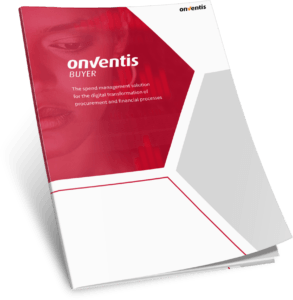Digitalizing Procurement Processes: Save Time, Money, and Stress with Automation
Streamline operations and reduce costs. Manual procurement processes are time-consuming, error-prone, and costly. By automating procurement processes, companies can save time and money, and reduce errors, leading to improved efficiency and a healthier bottom line.
Overcome resistance to change. Implementing digital procurement may face resistance from employees and stakeholders. However, addressing objections and communicating the long-term benefits, such as increased efficiency and new job opportunities, can help overcome resistance and pave the way for successful digitalization.

“The horse is here to stay but the automobile is only a novelty — a fad.”
The President of the Michigan Savings Bank has gone down in history advising Henry Ford’s lawyer, Horace Rackham, not to invest in the Ford Motor Company. Not only did he turn out to be laughably incorrect, but it was a substantial financial loss for his client, him, and anyone that listened to him. The digitalization of procurement is happening. Will you embrace it or be left behind?
Companies constantly look for ways to streamline their operations and improve their bottom line. One area where significant improvements can be made is in procurement processes. Manual procurement processes are often time-consuming, error-prone, and costly for businesses.
However, there is a better way. Digitalizing procurement processes through automation can offer a solution to these challenges. By automating procurement processes, companies can save time and money while reducing errors. This blog post will explore how digitalizing procurement processes can benefit businesses and why it’s anything but a fad.
The Challenges of Manual Procurement Processes
Despite technological advancements, many businesses still rely on manual procurement processes that can be time-consuming and error-prone. Manual procurement processes are often associated with various challenges that can impact the company’s bottom line. One common challenge is the lack of visibility into the procurement process, making it difficult for businesses to identify potential cost savings opportunities. Additionally, manual procurement processes can be inefficient, leading to delays in delivery and higher costs.
Businesses that rely on manual procurement processes have been shown to have up to 40% higher costs than those that have embraced digitalization and automation. These challenges highlight the importance of exploring digital procurement processes to optimize operations and reduce costs.
How Digitalization and Automation in Procurement Can Help
Digitalizing procurement processes through automation offers a solution to many of the challenges identified above.
Automation can help businesses to optimize their procurement process by identifying areas for cost savings and streamlining workflows, saving workers time to focus on strategy rather than taking care of repetitive tasks that can be easily automated. Overall, digitalizing procurement processes through automation offers a powerful solution for businesses looking to optimize their operations and reduce costs.
The Risks of Not Digitalizing Procurement Processes
While there are clear benefits to digitalizing procurement processes through automation, there are risks associated with not embracing this transition. One of the most significant risks is the potential for increased costs due to errors and inefficiencies in the procurement process. Errors can lead to increased costs and impact supplier relationships, resulting in lost business opportunities.
Additionally, manual processes can be time-consuming, leading to delays in the delivery of goods and services. This can impact the overall efficiency of the business and can ultimately lead to lost revenue. In short, not embracing digital procurement processes can be costly for companies in the long run.
Overcoming Resistance to Change
Implementing digital procurement processes through automation may require significant changes to how businesses operate, which can be met with resistance from employees and stakeholders.
One common objection to digital procurement is the perceived cost of implementation. While upfront fees may be associated with implementing digital procurement, the long-term benefits, such as increased efficiency and cost savings, outweigh these costs. Another objection is the fear of job loss due to automation. However, digital procurement can create new job opportunities, freeing up employees to focus on more strategic tasks. Overall, businesses need to address objections to digital procurement and communicate the benefits of automation to overcome resistance to change.
In conclusion, digitalizing procurement processes through automation offers a powerful solution for businesses looking to optimize their operations and reduce costs. Manual procurement processes can be time-consuming and error-prone, leading to inefficiencies and increased costs. By embracing digital procurement, businesses can gain greater visibility into their procurement, streamline operations, and reduce errors.
By now, it should be clear that the benefits of digital procurement far outweigh any up-front cost, and businesses that embrace this transition will see significant improvements in their bottom line nearly immediately. If you’re interested in getting started, check out our solutions and start making improvements.
If you have questions about how Onventis software can optimize your business, we’d love to give you more personalized answers. Or follow us on LinkedIn or sign up for our newsletter to stay in the loop.
Weitere BlogsMore BlogsMeer blogs




